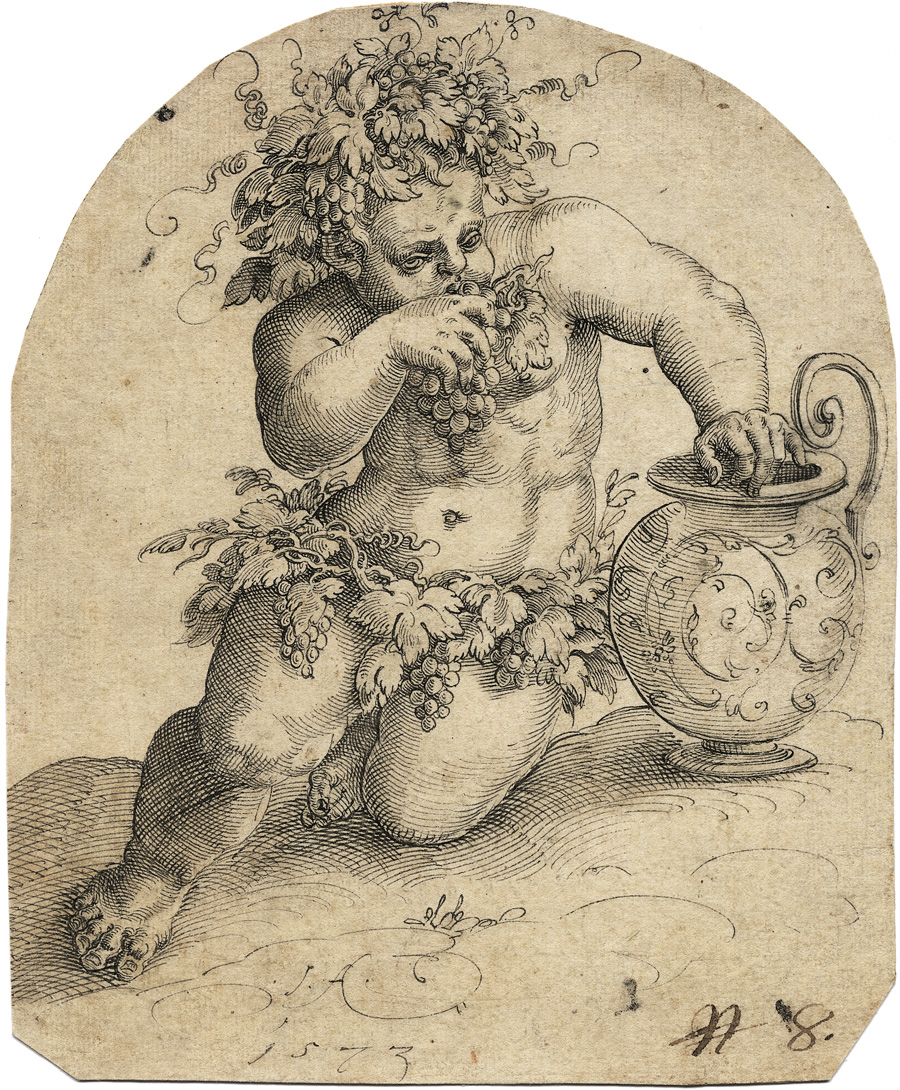Loading the page ...
Jost Amman
(1539 Zurich – 1591 Nuremberg)
The Young Bacchus. Pen and black ink. 18 x 14 cm. Monogrammed and dated: JA 1573.
Jost Amman was born in Zurich, where he grew up in a sheltered, humanist environment. His father was choirmaster and Professor of Rhetoric, Logic and Philology at the Collegium Carolinum of Zurich’s Classical Academy. In 1561 the artist moved to Nuremberg, where he joined the studio of Virgil Solis and soon made a name for himself as an etcher and designer of book illustrations. In 1577 Amman was made a citizen of Nuremberg. Following the death of Solis in 1562 Amman took over the flourishing studio, inheriting its artistic legacy. Subsequently he created numerous designs for stained-glass windows with Biblical themes and heraldic motifs commissioned by German and Swiss patricians. His marriage in 1574 to Barbara Wilck, the widow of a Nuremberg goldsmith, may have been instrumental in Amman’s subsequent close involvement with the design of pieces of gold work.
Amman’s graphic œuvre is thus very heterogeneous, expressing the remarkable versatility of his gifts. It is not clear whether the present little drawing is an independent work or whether it should be regarded as a primo pensiero for a piece of gold work. The sheet is characterized by his free, yet concentrated drawing style. A painstaking, accurate pen technique has been used to render the body of the young Bacchus, the decorative jug on his right and the ground underfoot, while the belt of vine leaves around his hips and his wreath are executed in a more spontaneous and sketchy manner. For the shaded areas Amman has used a dense network of slightly undulating cross-hatchings, which produce an effective contrast with the illuminated parts of the body. The systematic nature of the strokes betrays his training as an etcher. Amman has thus created an artistically convincing image of youthful, ecstatic vitality, the emphatically profane character of which is reminiscent of Italian Renaissance models. A drawing closely related to this one in terms of both style and iconography is to be found in the collection of the Basel Kunstmuseum (see exhibition catalogue Von Dürer bis Gober. 101 Meisterzeichnungen aus dem Kupferstichkabinett des Kunstmuseums Basel, edited by Christian Müller, Munich 2009, No. 34).
Mounted on a 17th century engraving. Free study sheets of this kind are rare in Amman’s œuvre.
